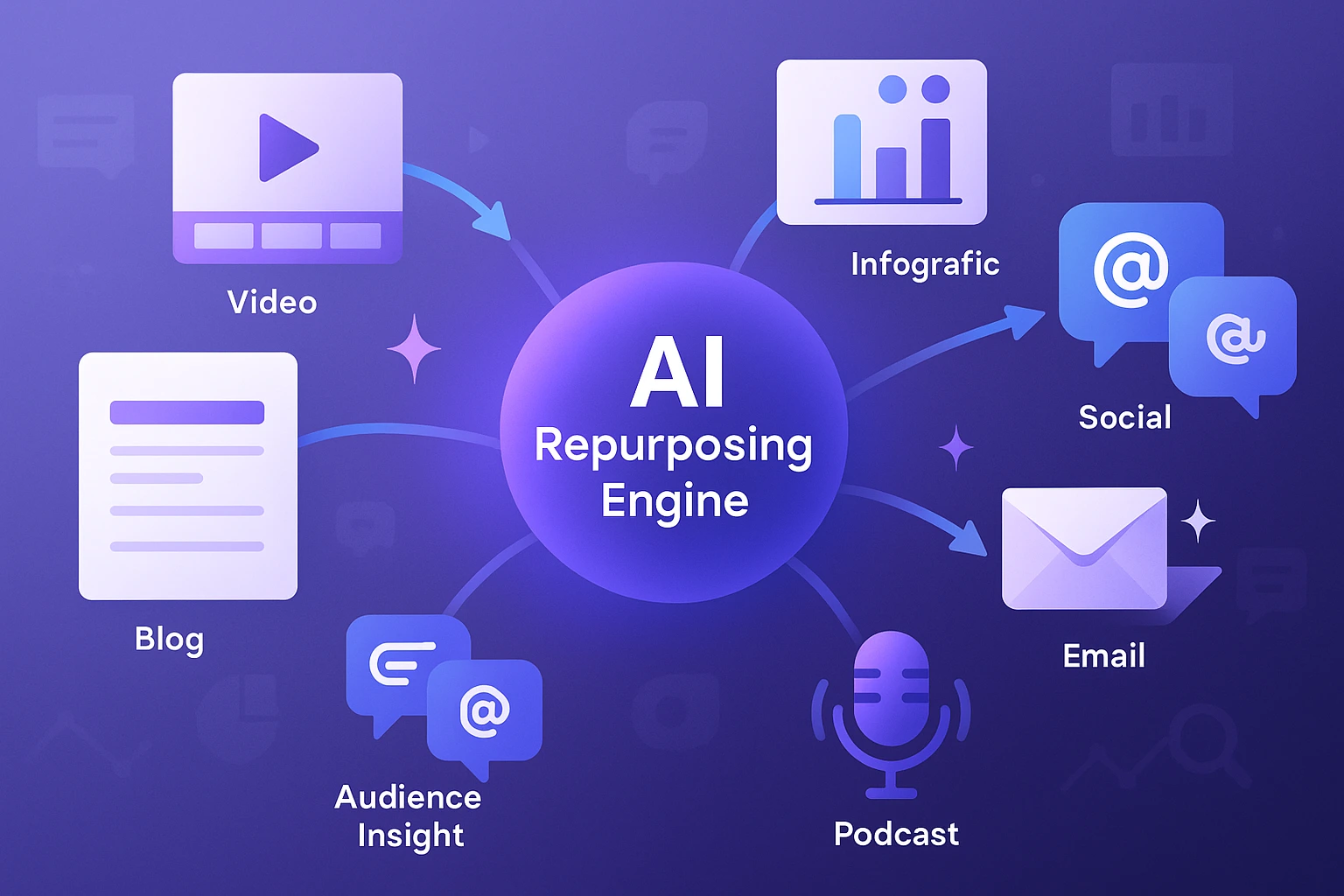
From Blog to Infographic: The Benefits of AI-Powered Content Repurposing
Creating fresh, high-impact content on a regular basis is one of the biggest hurdles modern marketers face. Audiences expect engaging material across an ever-growing number of platforms, but producing new content for each channel can quickly drain time, budget, and resources. Fortunately, advances in artificial intelligence (AI) have introduced a game-changing solution: AI-powered content repurposing. This strategy not only tackles the challenge of consistent content creation but also amplifies the value of your existing assets, helping you work smarter, not harder.
What is AI Content Repurposing?
AI content repurposing refers to the use of artificial intelligence tools to transform existing content into new formats or adapt it for different platforms and audiences. Rather than starting from scratch each time, marketers can leverage AI to rework blog posts into video scripts, turn webinars into infographics, or generate multiple social media posts from a single article. These tools analyze past performance, audience preferences, and trending topics to recommend which content pieces are best suited for repurposing and in what formats, making the entire process more targeted and efficient.
Major Benefits of Using AI for Content Repurposing
AI-powered content repurposing delivers a range of significant advantages for marketers looking to maximize their impact while minimizing effort:
1. Time and Cost Savings
Manually adapting content for different channels is a labor-intensive process. AI automates many of these repetitive tasks, from drafting new versions to scheduling and publishing content. As reported in a Sprout Social survey, teams using AI and automation tools saved up to 72 hours per quarter on content performance reporting alone. This efficiency allows marketers to focus their energy on high-value activities like creative strategy and audience engagement, ultimately driving better results with less resource investment.
2. Expanding Content Reach Across Multiple Platforms
AI tools excel at analyzing audience behaviors and determining which platforms are most effective for your message. By easily transforming one content asset into multiple formats—such as turning a long-form blog into a series of social posts, or converting a webinar into a podcast—marketers can ensure their ideas reach broader and more diverse audiences. According to the source document, “AI helps you distribute content more effectively by analyzing audience behavior to determine the best platforms and posting times.”
3. Improving SEO Performance Through Content Variations
Search engine optimization thrives on fresh, relevant, and well-targeted content. AI-driven repurposing tools can recommend keywords, improve readability, and suggest new angles for your repurposed pieces. By generating variations tailored for different user intents, marketers can address more search queries and stay ahead of competitors. AI’s ability to analyze trends and content gaps ensures that each new version is optimized to rank and attract organic traffic.
4. Maintaining Brand Consistency
With multiple team members and agencies often involved in content creation, maintaining a unified brand voice can be challenging. AI-powered solutions help enforce consistency by referencing brand guidelines and providing suggestions that keep tone, style, and messaging aligned. As noted in the source, tools like Sprout Social’s AI Assist generate content suggestions that stay true to the established brand voice, ensuring that every piece—no matter its format—reinforces your brand identity.
5. Catering to Different Audience Segments with Personalization
Modern audiences are diverse, and personalization is key to engagement. AI enables marketers to tailor repurposed content to specific audience segments by analyzing data on user behavior, preferences, and trends. Whether it’s adjusting the tone of a social post for younger users or customizing an email for returning customers, AI ensures that each version connects with its intended audience. As one source stated, “AI analyzes user data to deliver hyper-personalized content… leading to higher engagement, improved customer experiences and stronger brand loyalty.”
Integrating AI-Powered Repurposing Into Your Content Strategy
Embracing AI for content repurposing is more accessible than ever. Here are practical steps to get started:
First, identify your highest-performing or evergreen content. AI tools can analyze your content library and suggest which assets are best suited for repurposing. Next, leverage AI-powered platforms to generate new formats—such as transforming articles into short videos, infographics, or tailored social media snippets. Use AI scheduling and distribution features to publish these assets at optimal times for each platform, maximizing reach and engagement.
It’s important to balance AI automation with human creativity. While AI handles the heavy lifting—drafting, optimizing, and distributing—marketers should review outputs to ensure authenticity, emotional resonance, and alignment with brand values. As the source reminds us, “AI is still nascent and needs humans to guide, refine, and inject creativity and empathy into the content it generates.”
Conclusion
The pressure to deliver consistent, high-quality content is unlikely to diminish. By adopting AI-powered content repurposing, marketers can unlock significant efficiencies, extend their reach across platforms, and strengthen brand presence without sacrificing creativity or quality. This approach transforms content marketing from a resource drain into a scalable, data-driven engine for growth—empowering brands to stay agile and relevant in a fast-evolving digital landscape.